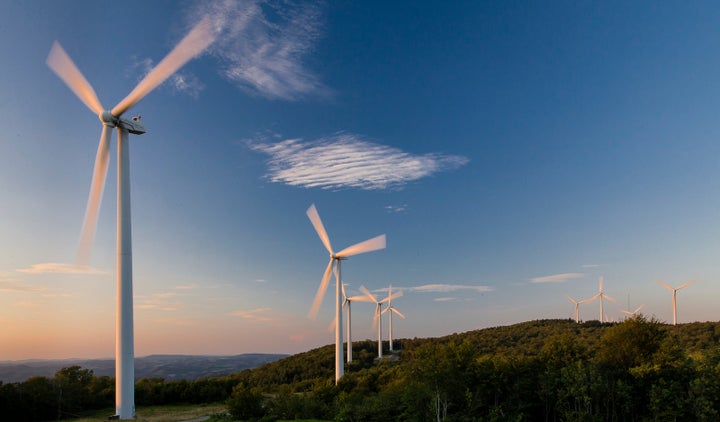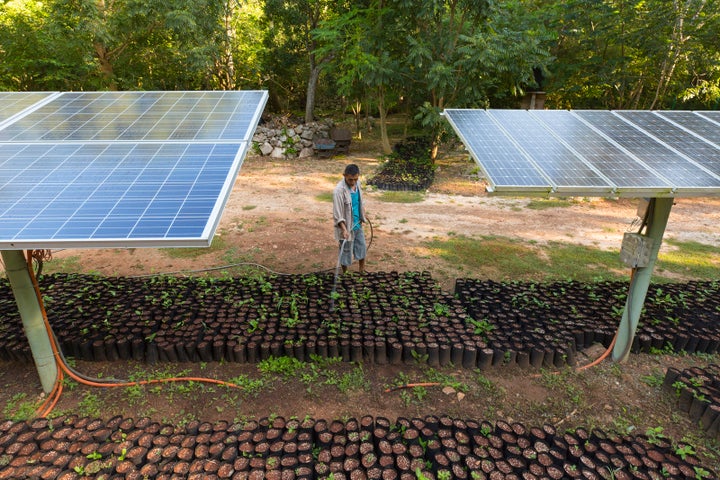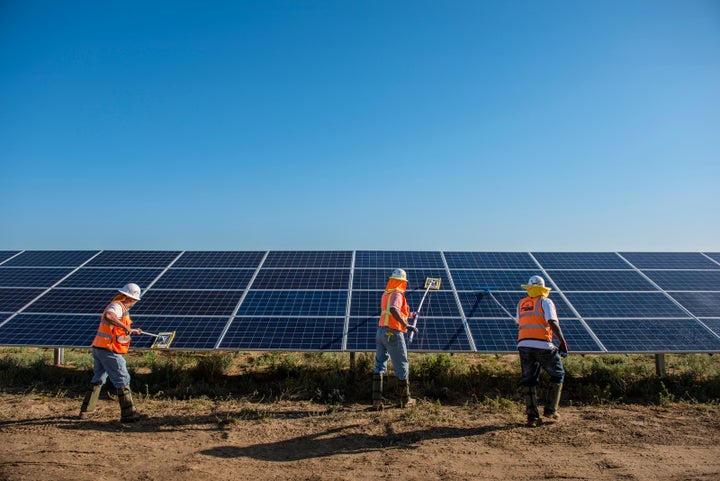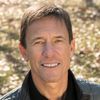
Wind farm turbines situated on a ridge top in the Appalachian mountains of West Virginia. © Kent Mason
There has been much discussion in the press (and fierce debate online) about climate change gloom and doom in response to “The Uninhabitable Earth” by David Wallace-Wells. The New York Magazine piece describes a planet that becomes the enemy of the human race by the end of the 21st century. Some very smart climate change reporters such as David Roberts at Vox think it is valuable to discuss and understand worst case outcomes, whereas others such as the scientist Michael Mann, writing for the Washington Post, worry that fear-mongering only turns people off when doomsday is described as inevitable.
Whatever your take, how we communicate about climate change matters. But what we do about it matters, too. Building on the current conversation, I want to share my thoughts on another climate publication we should all be talking about—one that approaches the issue from a very different angle.

New York Times bestselling book, “Drawdown”
“Drawdown,” edited by Paul Hawken and written with support from two hundred climate analysts, provides a much more hopeful prognosis than Wallace-Wells’ piece, arguing that we can reverse climate change by scaling up technologies and practices that are fully mature today. Mr. Hawken’s book is paired with an extensive website, www.drawdown.org, that describes 80 strategies for battling climate change (along with another 20 that are on the horizon). Ranging from onshore wind energy to “alternative cement,” these solutions—in combination with existing strategies and pushed hard by governments, businesses and individuals—could not only stop the growth in atmospheric concentrations of greenhouse gases but also reduce them.
This work builds on the reports of Princeton in the last decade that identified “wedges” that would hold global warming pollution to safe levels. These include strategies like energy efficiency to nuclear power to biofuels. Back when the papers were published, eight one-billion-ton reduction wedges would have done the job, and most were focused on the energy sector.
“Drawdown” takes a much more granular approach than the Princeton papers and invokes strategies that reach across a much broader range of human activity, including land use, materials, cities and food. The strategies the book proposes are also supported by a tremendous amount of research on their efficacy, their costs and the net benefits that would accrue if they are adopted.
As many experts have pointed out, renewable energy sources are a big part of the solution put forth in “Drawdown.” To reverse global warming, “Drawdown” concludes that all energy must come from renewable sources by 2050. Ranked by their contribution, onshore wind energy is #2 followed by utility-scale solar farms (#8), rooftop solar (#10), geothermal energy (#18), offshore wind turbines (#22) and concentrated solar power (#25).

Girls at Ewaso Primary School in Ewaso, in Laikipia in Northern Kenya. © Ami Vitale
But “Drawdown” also highlights the importance of some less-talked-about solutions. Importantly, it takes into consideration elements of society and diversity as crucial pieces of the puzzle. Educating girls (#6) and family planning (#7), if achieved at scale, would do more than any other single strategy. The two together would reduce the projected global population by 1.1 billion people by 2050 and reduce cumulative greenhouse gas (GHG) emissions by 120 billion tons. (The U.S. emits about 6 billion tons of GHGs each year.)
“Drawdown” also takes on the role of food production and use. Reduced food waste (#3) and plant rich diets (#4) could, in combination, reduce emissions by more than 130 billion tons. For a vegan like me, that’s a highly reinforcing message.
One other message from “Drawdown” that resonated with me was the large number of strategies that are based on building a better relationship with nature. Analyses by scientists at The Nature Conservancy (TNC) indicate that natural solutions are an essential part of solving the global warming problem. Our science shows that up to one-third of the reductions stated in the goals of the Paris Accord can be accomplished by sequestering carbon in forests, wetlands, agriculture soils and marine habitats. Twenty-three of the 80 “Drawdown” solutions are based in forests, agriculture or other land management strategies including tropical forests (#5), forest pastures (#9), regenerative agriculture (#11), temperate forests (#12), peatlands (#13), afforestation (#15), conservation agriculture (#16) and managed grazing (#19). This is work that TNC has been doing for years, and we wholeheartedly support placing natural solutions at the top of the menu for important climate protection strategies.

Solar panels at the Kaxil Kiuic Biocultural Reserve © Erich Schlegel
The message of “Drawdown” is far from gloom and doom—but there is much work to be done to bring these solutions to scale and make real, measurable change. In many cases, these solutions aren’t supported by policies and markets that would be needed to implement them rapidly and at scale. The gloom-and-doomers are right to suggest that we need to be on a war-footing when it comes to global warming.
One example of a solution where we have a long way to go is “refrigerant management.” It ranks #1 among the 80 solutions. The air conditioners and refrigerators we use today incorporate chemicals known as hydrofluorocarbons (HFCs) to achieve the cooling they provide. These HFCs were originally adopted in the 1990s to replace the CFCs that were depleting the stratospheric ozone layer. While they are safe for ozone layer, HFCs are very potent greenhouse gases—some, 9000 times more powerful, molecule-for-molecule, than carbon dioxide.
The good news is that world governments reached an agreement in 2016 to phase out the production and use of HFCs. But the HFCs in air conditioners and refrigerators already in homes today, if released to the atmosphere when that equipment wears out, are potent enough to make capturing and destroying those HFC emissions priority #1 on the “Drawdown” list. This will cost tens of billions of dollars with the responsibility spread across the whole consumer economy. There is no policy in place now to accomplish that objective.
Another example is the transition from fossil fuels to renewable sources in our energy systems. We have made dramatic progress in reducing the costs of wind and solar energy. If you were building a new power plant today, wind would be cost-competitive with natural gas, and solar farms may be competitive in a few years. But that doesn’t mean that we are ready to go out and tear down all of the fully-paid-for fossil plants that are now standing and operating.

Workers clean solar panels for maximum efficiency in Lancaster, California. © Dave Lauridsen
To make a more rapid transition to renewable energy, we should establish a price on carbon emissions either through a tax or a cap and trade program that will assure that the cost of energy produced from those existing plants fully reflects the global warming impacts they impose.
“Drawdown” encourages readers to find hope in a habitable future planet, while at the same time spurring action. And most importantly, it extends the discussion about solutions to many aspects of our lives beyond energy—showing how each of us may become more involved in protecting the planet. There is still much to be done in policy and practice to scale these solutions to actions that can reverse global warming. Let’s get to work.
Mark Tercek is the president and CEO of the Nature Conservancy and author of Nature’s Fortune. Follow Mark on Twitter: @MarkTercek.
